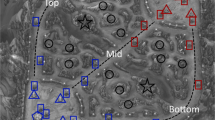Abstract
This paper introduces spatio-temporal analysis techniques for games. Game analytics is emerging field in Business Insight (BI) area. The benefits of adopting game analytics technique in commercial game development can help decision making in game design and quality assurance which are not quantified yet. For last 10 years, researchers in game user research area have proposed the frontier of techniques in game analytic field. Among them, spatio-temporal analysis field is most important for understanding of users in game environments intuitively. In this paper, we summarize four key areas of spatio-temporal analysis: visualization techniques, trajectory analysis, in-house telemetry system, and web-based middlewares in detail.





Similar content being viewed by others
References
Borner K, Penumarthy S (2003) Social diffusion patterns in three-dimensional virtual worlds. Inf Vis 2(3):182–198
Chen KT, Pao HKK, Chang HC (2008) Game bot identification based on manifold learning, proceedings of ACM NetGames
Chittaro L, Ranon R, Leronutti L (2006) VU-flow: a visualization tool for analyzing navigation in virtual environments. IEEE Trans Vis Comput Graph 12(6):1475–1485
DeRosa, tracking player feedback to improve game design, Gamasutra
Drachen A, Canossa A, Yannakakis GN (2009) Player modeling using self-organization in Tomb Raider: Underworld, CIG 1–8
GameAnalytics, http://www.gameanalytics.com/
Georg Zoeller, Development telemetry in video games projects, GDC 2010
Honeytrack, https://honeytracks.com/
Hoobler N, Humphreys G, Agrawala M (2004) Visualizing competitive behaviors in multi-user virtual environments, proceedings of the 15th IEEE visualization conference, 163–170
Kang SJ, Kim YB, Park TJ, Kim CH (2012) Player behavior analysis system using trajectory data in a massive multiplayer online game. Multimedia Tools Appl 58(1):1–22
Kim JH, Gunn DV, Schuh E, Phillips B, Pagulayan RJ, Wixon D (2008) Tracking real-time user experience (TRUE): a comprehensive instrumentation solution for complex systems. In proceeding of the twenty-sixth annual SIGCHI conference on human factors in computing systems, 443–452
Medler B, John M, Lane J (2011) Data cracker: developing a visual game analytic tool for analyzing online gameplay. In proceedings of CHI
Oda J, Thawonmas R, Chen KT (2009) Comparison of user trajectories based on coordinate data and state transitions, proceedings of the fifth international conference on intelligent information hiding and multimedia signal processing, IEEE 1134–1137
Thawonmas R, Iizuka K (2008) Visualization of online game players based on their action behaviors. Int. Journal of computer games technology
Thawonmas R, Kurashige M, Chen KT (2007) Detection of landmarks for clustering of online-game players. Int J Virtual Real 6(3):11–16
Acknowledgments
This work was supported by National Research Foundation of Korea Grant funded by the Korean Government (No. 2012R1A1A1012895)
Author information
Authors and Affiliations
Corresponding author
Rights and permissions
About this article
Cite this article
Kang, S.J., Kim, S.K. Automated spatio-temporal analysis techniques for game environment. Multimed Tools Appl 74, 6323–6329 (2015). https://doi.org/10.1007/s11042-014-2121-0
Received:
Accepted:
Published:
Issue Date:
DOI: https://doi.org/10.1007/s11042-014-2121-0




